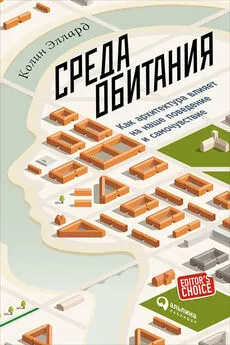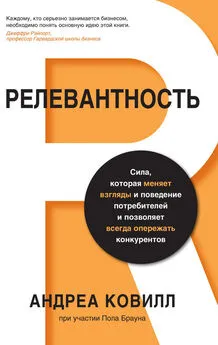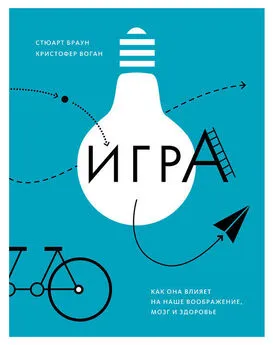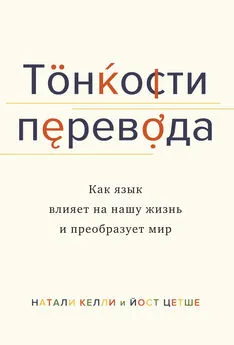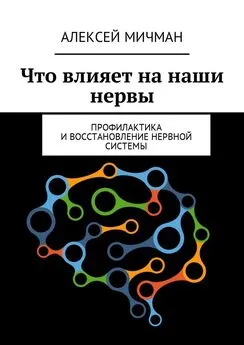Мэтью Джексон - Человеческие сети [Как социальное положение влияет на наши возможности, взгляды и поведение]
- Название:Человеческие сети [Как социальное положение влияет на наши возможности, взгляды и поведение]
- Автор:
- Жанр:
- Издательство:АСТ: CORPUS
- Год:2021
- Город:Москва
- ISBN:978-5-17-117364-7
- Рейтинг:
- Избранное:Добавить в избранное
-
Отзывы:
-
Ваша оценка:
Мэтью Джексон - Человеческие сети [Как социальное положение влияет на наши возможности, взгляды и поведение] краткое содержание
В формате PDF A4 сохранен издательский макет книги.
Человеческие сети [Как социальное положение влияет на наши возможности, взгляды и поведение] - читать онлайн бесплатно ознакомительный отрывок
Интервал:
Закладка:
Nei S. M. Frictions in Information Aggregation in Social Learning Environments . Mimeo. Oxford University, 2017.
Neuman S. B., Celano D. Giving Our Children a Fighting Chance: Poverty, Literacy, and the Development of Information Capital . N. Y.: Teachers College Press, 2012.
Newman M. E. J. The Structure and Function of Complex Networks // SIAM Review. 2003. Vol. 45. № 2. P. 167–256.
Newman M. E. J., Moore C., Watts D. J. MeanField Solution of the Small-World Network Model // Physical Review Letters. 2000. Vol. 84. P. 3201–3204.
Nguyen T. Information, Role Models and Perceived Returns to Education: Experimental Evidence from Madagascar . 2008. Рукопись, MIT.
Ody-Brasier A., Fernandez-Mateo I. Minority Producers and Pricing in the Champagne Industry: The Case of Female Grape Growers // Academy of Management Proceedings. 2015. Vol. 2015. № 1. P. 124–157.
Ostrom E. Governing the Commons: The Evolution of Institutions for Collective Action . Cambridge, U. K.: Cambridge University Press, 1990.
Ozsoylev H. N., Walden J., Yavuz M. D., Bildik R. Investor Networks in the Stock Market // The Review of Financial Studies. 2014. Vol. 27. № 5. P. 1323–1366.
Padgett J. F., Ansell Ch. K. Robust Action and the Rise of the Medici 1400–1434 // American Journal of Sociology. 1993. Vol. 98. № 6. P. 1259–1319.
Page S. E. The Difference: How the Power of Diversity Creates Better Groups, Firms, Schools, and Societies . Princeton, N. J.: Princeton University Press, 2008.
Page, Scott E. The Diversity Bonus: How Great Teams Pay Off in the Knowledge Economy . Princeton, N. J.: Princeton University Press, 2017.
Pallais A., Glassberg Sands E. Why the Referential Treatment: Evidence from Field Experiments on Referrals // Journal of Political Economy. 2016. Vol. 124. № 6. P. 1793–1828.
Patacchini E., Zenou Y. Ethnic Networks and Employment Outcomes // Regional Science and Urban Economics. 2012. Vol. 42. P. 938–949.
Payne B. K., Brown-Iannuzzi J. L., Hannay J. W. Economic Inequality Increases Risk Taking // Proceedings of the National Academy of Sciences. 2017. Vol. 114. P. 4643–4648.
Pennock D. M., Flake G. W., Lawrence S., Glover E. J., Giles C. L. Winners Don’t Take All: Characterizing the Competition for Links on the Web // Proceedings of the National Academy of Sciences. 2002. Vol. 99. P. 5207–5211.
Perkins H. W., Haines M. P., Rice R. Misperceiving the College Drinking Norm and Related Problems: A Nationwide Study of Exposure to Prevention Information, Perceived Norms and Student Alcohol Misuse // Journal of Studies on Alcohol. 2005. Vol. 66. P. 470–478.
Perkins H. W., Linkenbach J. W., Lewis M. A., Neighbors C. Effectiveness of Social Norms Media Marketing in Reducing Drinking and Driving: A Statewide Campaign // Addictive Behaviors. 2010. Vol. 35. P. 866–874.
Perkins H. W., Meilman Ph. W., Leichliter J. S., Cashin J. R., Presley Ch. A. Misperceptions of the Norms for the Frequency of Alcohol and Other Drug Use on College Campuses // Journal of American College Health. 1999. Vol. 47. № 6. P. 253–258.
Persson T., Tabellini G. Is Inequality Harmful for Growth? // The American Economic Review. 1994. Vol. 84. P. 600–621.
Pfeffer J. Power in Organizations . Vol. 33. Marshfield, Mass.: Pitman, 1981.
Pfeffer J. Managing with Power: Politics and Influence in Organizations . Cambridge, Mass.: Harvard Business Press, 1992.
Pfitzner R., Scholtes I., Garas A., Tessone C. J., Schweitzer F. Betweenness Preference: Quantifying Correlations in the Topological Dynamics of Temporal Networks // Physical Review Letters. 2013. Vol. 110. Article № 198701.
Piketty Th. Capital in the Twenty-First Century . Cambridge, Mass.: Harvard University Press, 2014.
Popkin S. J., Harris L. E., Cunningham M. K. Families in Transition: A Qualitative Analysis of the MTO Experience . Report Prepared for the U. S. Department of Housing and Urban Development, 2002.
Porter M. A., Onnela J.-P., Mucha P. J. Communities in Networks // Notices of the AMS. 2009. Vol. 56. P. 1082–1097.
Poy S., Schüller S. Internet and Voting in the Web 2.0 Era: Evidence from a Local Broadband Policy . (2016) CESIFO Working Paper № 6129.
Prabhakar B., Dektar K. N., Gordon D. M. The Regulation of Ant Colony Foraging Activity Without Spatial Information // PLoS Computational Biology. 2012. Vol. 8. Article № e1002670.
Prendergast C., Topel R. H. Favoritism in Organizations // Journal of Political Economy. 1996. Vol. 104. P. 958–978.
Price D. D. S. A General Theory of Bibliometric and Other Cumulative Advantage Processes // Journal of the American Society for Information Science. 1976. Vol. 27. P. 292–306.
Prummer A. Spatial Advertisement in Political Campaigns . Preprint, Queen Mary University of London, 2016.
Putnam R. D. Bowling Alone: The Collapse and Revival of American Community . N. Y.: Simon & Schuster, 2000.
Quillian L. Prejudice as a Response to Perceived Group Threat: Population Composition and Anti-Immigrant and Racial Prejudice in Europe // American Sociological Review. 1995. P. 586–611.
Rainie L., Wellman B. Networked: The New Social Operating System . Cambridge, Mass.: MIT Press. 2012.
Ravallion M., Chaudhuri S. Risk and Insurance in Village India: Comment // Econometrica. 1997. Vol. 65. № 1. P. 171–184.
Rawls J. A Theory of Justice . Cambridge, Mass.: Harvard University Press, 1971.
Reardon S. F. The Widening Academic Achievement Gap Between the Rich and the Poor: New Evidence and Possible Explanations // Whither Opportunity. N. Y.: Russell Sage Foundation. 2011. P. 91–116.
Rees A., Shultz G. P. et al. Workers and Wages in an Urban Labor Market . Chicago: University of Chicago Press, 1970.
Reinhart C., Rogoff K. This Time Is Different . Princeton, N. J.: Princeton University Press, 2009.
Revzina N. V., DiClemente R. J. Prevalence and Incidence of Human Papillomavirus Infection in Women in the USA: A Systematic Review // International Journal of STD and AIDS. 2005. Vol. 16. P. 528–537.
Riach P. A., Rich J. Field Experiments of Discrimination in the Marketplace // The Economic Journal. 2002. Vol. 112. P. F480–F518.
Richerson P. J., Boyd R. Not by Genes Alone: How Culture Transformed Human Evolution . Chicago: University of Chicago Press, 2008.
Roemer J. E., Trannoy A. Equality of Opportunity: Theory and Measurement // Journal of Economic Literature. 2016. Vol. 54. P. 1288–1332.
Rogers E. M. Diffusion of Innovations . N. Y.: Free Press, 1995.
Ross L., Greene D., House P. The False Consensus Effect: An Ego-Centric Bias in Social Perception and Attribution Processes // Journal of Experimental Social Psychology. 1977. Vol. 13. P. 279–301.
Roth A. E. Repugnance as a Constraint on Markets // The Journal of Economic Perspectives. 2007. Vol. 21. P. 37–58.
Sacerdote B. Peer Effects with Random Assignment: Results for Dartmouth Roommates // The Quarterly Journal of Economics. 2001. Vol. 116. P. 681–704.
Sacerdote B. Peer Effects in Education: How Might They Work, How Big Are They and How Much Do We Know Thus Far? // Handbook of the Economics of Education / Ed. by E. A. Hanushek, S. Machin, L. Woessmann. San Diego: North-Holland, 2011. Vol. 3. P. 249–277.
Salganik M. J., Dodds P. S., Watts D. J. Experimental Study of Inequality and Unpredictability in an Artificial Cultural Market // Science. 2006. Vol. 311. P. 854–856.
Samphantharak K., Townsend R. M. Risk and Return in Village Economies // American Economic Journal: Microeconomics. 2018. Vol. 10. № 1. P. 1–40.
Saunders A., Wilson B. Contagious Bank Runs: Evidence from the 1929–1933 Period // Journal of Financial Intermediation. 1996. Vol. 5. P. 409–423.
Schaner S. Do Opposites Detract? Intrahousehold Preference Heterogeneity and Inefficient Strategic Savings // American Economic Journal: Applied Economics. 2015. Vol. 7. № 2. P. 135–174.
Scharfstein D. S., Stein J. C. Herd Behavior and Investment // The American Economic Review. 1990. Vol. 80. P. 465–479.
Schmitt R. C., Nordyke E. C. Death in Hawai’i: The Epidemics of 1848–1849 // The Hawaiian Journal of History. 2001. Vol. 35. P. 1–13.
Schweitzer F., Fagiolo G., Sornette D., Vega-Redondo F., Vespignani A., White D. R. Economic Networks: The New Challenges // Science. 2009. Vol. 325. P. 422–425.
Scitovsky T. TwoConcepts of External Economies // Journal of Political Economy. 1954. Vol. 62. № 2. P. 143–151.
Seabright P. The Company of Strangers: A Natural History of Economic Life . Princeton, N. J.: Princeton University Press, 2010.
Shemesh J., Zapatero F. The Intensity of Keeping Up with the Joneses Behavior: Evidence from Neighbor Effects in Car Purchases . 2016. Preprint.
Shi Y., Rao Y. China’s Research Culture // Science. 2010. Vol. 329. № 5996. P. 1128.
Shiller R. J. Irrational Exuberance . Princeton, N. J.: Princeton University Press, 2015.
Shilts R. And the Band Played On: Politics, People, and the AIDS Epidemic . N. Y.: St. Martin’s Press, 1987.
Shoag D., Veuger S. No Woman No Crime: Ban the Box, Employment, and Upskilling . (2016) HKS Working Paper № 16-015.
Shulman S. T., Shulman D. L., Sims R. H. The Tragic 1824Journey of the Hawaiian King and Queen to London: History of Measles in Hawaii // Pediatric Infectious Disease Journal. 2009. Vol. 28. № 8. P. 728–733.
Skopek J., Schulz F., Blossfeld H.-P. Who Contacts Whom? Educational Homophily in Online Mate Selection // European Sociological Review. 2010. Vol. 27. № 2. P. 180–195.
Smith A. An Inquiry into the Nature and Causes of the Wealth of Nations . London: A. and C. Black and W. Tait, 1776.
Smith L., Sorensen P. Pathological Outcomes of Observational Learning // Econometrica. 2000. Vol. 68. P. 371–398.
Smith S. S. Mobilizing Social Resources: Race, Ethnic, and Gender Differences in Social Capital and Persisting Wage Inequalities // The Sociological Quarterly. 2000. Vol. 41. № 4. P. 509–537.
Snijders T. A. B. Multilevel Analysis // International Encyclopedia of Statistical Science. N. Y.: Springer, 2011. P. 879–882.
Sobel J. Can We Trust Social Capital? // Journal of Economic Literature. 2002. Vol. 40. P. 139–154.
Solomonoff R., Rapoport A. Connectivity of Random Nets // The Bulletin of Mathematical Biophysics. 1951. Vol. 13. P. 107–117.
Solow R. M. Notes on Social Capital and Economic Performance // Social Capital: A Multifaceted Perspective. Washington, D. C.: World Bank Publications, 2000. Vol. 6. P. 6–12.
Soramäki K., Bech M. L., Arnold J., Glass R. J., Beyeler W. E. The Topology of Interbank Payment Flows // Physica A. 2007. Vol. 379. P. 317–333.
Stanley H. E. Phase Transitions and Critical Phenomena . Oxford, U. K.: Oxford University Press, 1971.
Stock J. H., Trebbi F. Retrospectives: Who Invented Instrumental VariableRegression? // The Journal of Economic Perspectives. 2003. Vol. 17. P. 177–194.
Su L. N., Wu D. Is Audit Behavior Contagious? Teamwork Experience and Audit Quality by Individual Auditors . 2016. Доступно: https://ssrn.com/abstract=2816435.
Читать дальшеИнтервал:
Закладка:
![Обложка книги Мэтью Джексон - Человеческие сети [Как социальное положение влияет на наши возможности, взгляды и поведение]](/books/1061636/metyu-dzhekson-chelovecheskie-seti-kak-socialnoe-po.webp)

